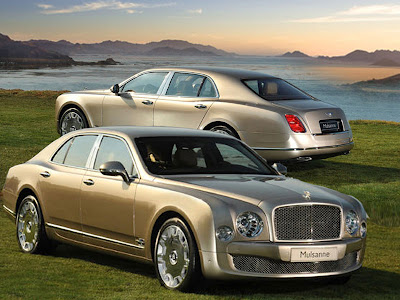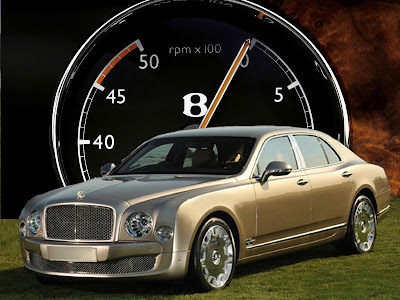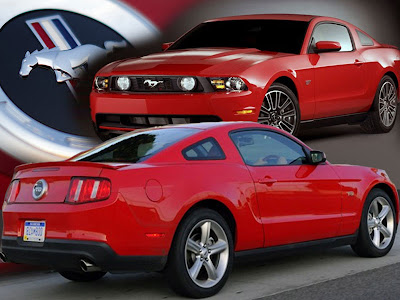
Sigh. Another day, another 500+ horsepower supercar to babysit for a week. Such is my lot in life. Obviously I'm joking, to a degree. To be honest, I wasn't that particularly jazzed about the Audi R8 with the defanged Lambo LP560-4 V10 shoehorned behind the seats, especially as I had prior knowledge that the more proper six-speed manual R8 5.2 FS I was supposed to get had been unceremoniously replaced by the slusher, R-Tronic version. Before continuing one sentence further, am I aware that I sound like the world's most spoiled rotten brat? Oh yes.
But see, the thing is, I've driven the regular-strength V8 R8 and you know what? There's nothing wrong with it. Perfectly neutral handling, 420 eager horses and looks that kill, or at least attract eyeballs like nothing I've seen this side of pornography. While more horsepower is always welcome, the notion that the 5.2-liter V10 "only" makes 105 ponies more combined with the extra weight just didn't set off any great alarm bells of excitement. I'll put it to you like this: I was much more excited when the 2010 Nissan GT-R showed up at my door.
It's now seven days, four tanks of gasoline and 870 miles later. I drove the wheels off the world's most expensive Audi, thrice. On every type of road, over every type of surface, never venturing more than a few miles from home. I mention that last bit because discounting long trips, I've never put so many miles on a press car. Has my tune changed? Is the ten-cylinder R8 worth the $25,000 price premium over it's "lesser" sibling? Perhaps most importantly, is the Audi R8 5.2 FSI an actual, honest-to-goodness everyday supercar? Jump and find out. And if you don't feel like jumping, please for the good of your eyes, take a few minutes to peruse the gallery, as it is one of our finest ever.
There are two ways to tackle this review. The first would be to make as if I'm texting my 18-year-old soon-to-be sister-in-law:
OMG! OMG! OMG! The other would be the responsible, semi-journalistic approach where for every high point, I balance it with some bad news (0-60 mph in 3.7 seconds and 3.7 mpg while doing so). For the sake of informativeness, I'm choosing the later. But let me just say one thing before we start:
OMG! OMG! OMG!Let's get this part out of the way now. There are several problems with the R8 5.2 FSI. The first is the name. R8 5.2 FSI sounds like what NASA might name a new star and is only half as sexy. The easy solution would have been to call it the RS8, but I've long ago stopped trying to make sense of Germanic automotive nomenclature (BMW X6 xDrive35i springs to mind). And since the average man on the street (and that street is probably Rodeo Drive) has zero clue what 5.2 FSI means, Audi stuck several "V10" emblems on the coupe, in case said man wants to know why your R8 costs $25,000 more than his.

The R-Tronic transmission is really terrible. Still. After 20 minutes in city traffic, I arrived at a fellow auto scribe's house and told him to drive because I simply hated the car. In full automatic mode, the R8 lurches between gears worse than any autobox I've ever experienced. Here's the awful kicker, in manual mode it's just as slow and lurchy. You have to hit the "Sport" button to get kinda quick gear changes. Compared to say the real dual-clutch in the Nissan GT-R, Audi's R-Tronic feels at least one generation behind the times.
At least. Also, the GT-R's paddles are column mounted (where God and those red-color loving Italians intended them), whereas the Audi's move around with the wheel.
There are almost no situations where it's a good idea to be changing gears mid-turn, and quite a few where it's dangerous to do so, especially because wheel-mounted paddles make it all too easy to
accidentally swap cogs. And these feel like they're the same paddles on the A3. The A3 that has DSG mind you, unlike the sinfully more expensive R8 5.2 FSI. And the R-Tronic transmission (only six-speeds, by the way) is a
$9,000 option. That said, when the engine revs up to around 5,000–8,000 rpm, Audi's claimed gear change time of one-hundredth of a second is (almost) believable. Luckily there's an easy fix for this: get the gated manual.
Speaking of the A3, our R8 came with over $7,000 dollars worth of interior "enhancements." Going from least to most, $1,300 for an Alcantara headliner, $2,500 for carbon fiber sigma interior inlays and $3,500 for the enhanced leather package. All that filthy lucre gets you an interior that feels like... a tarted-up Audi A3 with a $1,300 alcantara headliner. In case you didn't know, you can't tell the difference between real and fake carbon fiber just by looking or touching, as they both look and feel like plastic. Also, if that's "enhanced" leather, I'd hate to have to sit in the cheap stuff. And the less said about the useless, illegible navigation system the better.




But the major issue with the R8 5.2 is the engine. Now, there is actually nothing in the world wrong with a V10 that puts out 525 horsepower, 391 pound-feet of torque and revs to 8,750 rpm faster than you can say "direct injection." Especially one that seems to get off on exploding unburned gasoline in the exhaust headers when you come off the throttle. But... that very same engine makes 552 horsepower and 398 torques when "Lamborghini" is stamped on the valve covers. While you're chewing on that, let me share our R8's price tag: $172,250 (base price is $155,000 + $2,100 gas guzzler + $1,100 destination + all the extras).
What I'm getting at is that Audi has to find buyers comfortable with spending seven
quarters eighths of $200,000 on a car with a detuned motor. I don't know about you, but if I spent $172,250 on
anything short of a house, I wouldn't want it to be second fiddle. I would damn well expect said high dollar purchase to be the very best it could be. In this situation, perhaps ignorance is, in fact, bliss. Meaning that Audi
might be able to track down a few folks who are not only interested in its top dog R8, but who are also totally unaware of the R8/Gallardo engine connection. Last I heard, there were three of them, all living in Florida. Put another way, are you fooled by the M5 badge on the back of the 525i? Also, the cabin's a little quiet, even under full whap.
Now that all that's out of my system,
OMG! OMG! OMG!
Let's start with the looks. In my mind, the R8 still isn't an attractive car, but it sure is something to look at. It's the kind of vehicle a Cylon would drive. To a strip club. Angry, alien, outlandish. Short of the TT and the Bugatti Veyron, there's nothing else (save old Karmann Ghias) that looks anything like it. Not that this is objective in any way, but more heads were turned by this Sepang Blue R8 than by any other car I've ever driven. Retina-searing yellow Lamborghini Gallardos included.
In case you come across both a debadged "regular" R8 and a V10 version and want to spot the differences, here's what they are. The V10 has three black plastic strakes across the rear fascia, while the V8 has four. Huh? Why would the more expensive model have fewer anything than the lesser model? Look closely at the new car's rump and you'll notice a big fat vent in the rear valance. That hole is to vent hot air away from the twisted exhaust headers. Take a second peak and you can actually see the collectors snaking down towards the bottom of the car. This is nothing but pure speculation on my part, but it wouldn't surprise me if the V10 mule that burned down to its aluminum frame on the Nürburgring didn't in fact have the V8's sealed rear end. More empirically, you can
feel the heat flowing out of the twin slots after the R8's been in park for 30 minutes.




Speaking of venting, the V10 model has faux-ovoid exhaust tips like the RS4 and RS6. Faux because if you look past them you see the two actual exhaust tips (the Lexus IS F pulls this same trick). The big R8 also has flared side blades, which I quite like, In the same way that I like the asymmetrical sill-air scoops on the Murcielago LP640-4. Awkward for a very good reason – pulling more cold air into the famished engine. The rear portion of the underbody is also different from the V8, looking as if it might provide some downforce. Up front, the headlights are different and then, of course, you have have the 24 LED daytime running lights on each side, there to symbolize Audi's dominance at the 24 Hours of Le Mans. To steal a line from Clarkson, that bit of trivia is sure to impress your date...
Finally, we come to driving. The quickest way to sum up the R8 5.2 FSI is to call it a big, fat, fast Porsche Cayman S, which, please believe me, is a
huge compliment, as the Cayman S is perhaps the best handling car I've ever driven short of something severe and doorless like a Lotus Se7en. The big, mid-engined Audi has absolutely no understeer. Shockingly, and quite seriously,
none. I know this because after 45 minutes of straight-up canyon terrorism, I got the brakes to fade. I panicked, dug deep into the ABS, then turned the wheel hard to the left – a classic recipe for understeer if there ever was one. To my massive surprise -- I was anticipating that nasty feeling of skipping along on the right front tire -- the R8 just turned. Impressive for any car, but in one that weighs 3,726 pounds? One word: wow.



In big powerful monsters like the Nissan GT-R and Chevrolet Corvette Z06, the handling is without question great. That said, they will understeer when pushed. Even the incredible-for-its-price Mazda MX-5 Miata will plow like a farmer if you cross it up enough. Not the R8. Other modern cars that don't understeer? Porsche Boxster, Porsche Cayman, a couple of $200,000+ supercars, and that's about it. Again, hugely impressive. However, the steering feel is a little numb (like a certain Nissan, you just sort of saw at the wheel and the car goes exactly where you point it). There's basically no feedback, either. This is a little surprising as fully 90 percent of the R8's power is routed to the rear wheels, though I suppose when you have the wheel cranked in anger, some computer is telling the tranny to mete out more juice to the front wheels. Anyhow, she handles like a peach. An angry, tarmac-ripping peach.
The chassis magic doesn't stop there. The R8 is so well set up, balanced and over-tired (Pireli Pzero 235/35/19Rs up front, 295/30/19Rs out back) that not only is the grip seemingly never ending, but you have to really work hard to induce oversteer. 8,000 rpm and some janky, ill-advised steering wheel inputs seems to do the trick. Back to the grip for a moment, it's just tremendous, and rivaled only (in my mind) by the Nissan GT-R, the latter being the best road-hugger I've ever driven. One way to look at the R8 5.2 FSI is 9/10s of a GT-R for double the money. However, another is to understand that Nissan sells the GT-R for half of what it cost them to build and this here Audi is about 98/100s as good to drive. Maybe 99...

Finally, there's the thrust from that mighty, though slightly devolved V10. It's epic, though certainly not as quick in a straight line as the LP560-4 Gallardo. In fact, we know that the Lambo will beat the Audi to 60 mph by three-tenths of a second. And if you can tell the difference between 3.4 and 3.7 seconds, you're a liar. Or very close to one. At the end of the day, a 3.7-second blast to 60 mph is only achieved using the car's launch control (sport suspension on, sport transmission on, hold down the ESP button for about six seconds, left foot on brake, right foot floors the throttle, side-step the brake pedal, buh-bye) and doing that more than once is clutch-homicide. Bottom line, does the V10 R8 feel supercar fast? Yes, it most certainly does.
The real story is what the R8 5.2 FSI feels like when you've just blipped the motor up to 8,000 rpm and have the steering wheel rheostated at 45 degrees before dusting off a sharp turn. It's beautiful. It's glorious. It's wondrous. It's revelatory. Forget all that nonsense I spewed earlier on – nothing but words. Like any supercar – and oh, my yes this sucker is super – all you want to do is push harder and dig deeper. Everyday? I should be so lucky. And I truly wish that every pistonhead everywhere could experience the R8 5.2 FSI on their favorite road approaching full clip. Because as far as cars go, this $172,250 seems like money very well spent.
[Source: Autoblog]
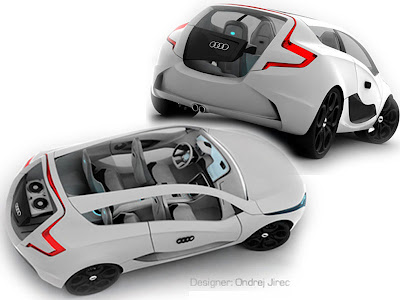
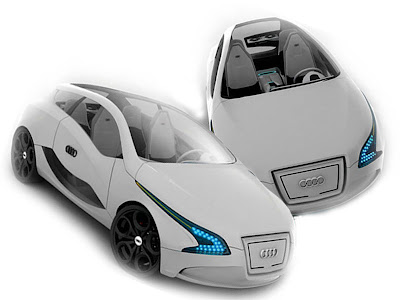


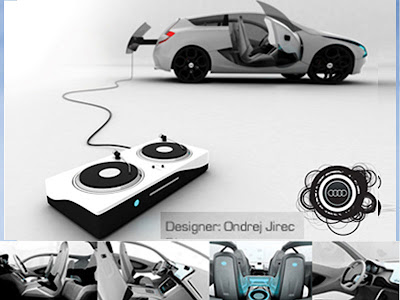 Audi O Sports Car Concept
Audi O Sports Car Concept 

